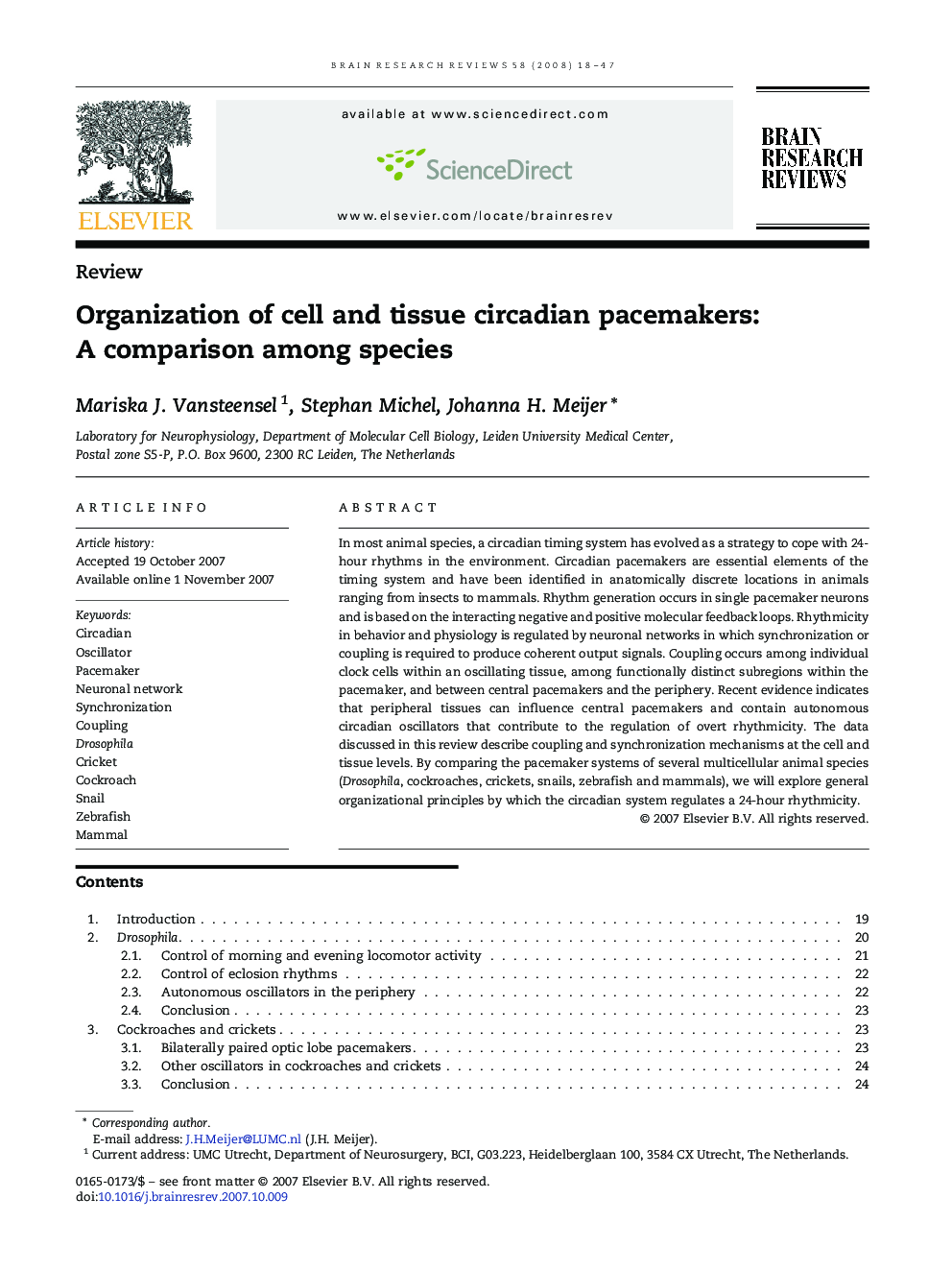| Article ID | Journal | Published Year | Pages | File Type |
|---|---|---|---|---|
| 4333749 | Brain Research Reviews | 2008 | 30 Pages |
In most animal species, a circadian timing system has evolved as a strategy to cope with 24-hour rhythms in the environment. Circadian pacemakers are essential elements of the timing system and have been identified in anatomically discrete locations in animals ranging from insects to mammals. Rhythm generation occurs in single pacemaker neurons and is based on the interacting negative and positive molecular feedback loops. Rhythmicity in behavior and physiology is regulated by neuronal networks in which synchronization or coupling is required to produce coherent output signals. Coupling occurs among individual clock cells within an oscillating tissue, among functionally distinct subregions within the pacemaker, and between central pacemakers and the periphery. Recent evidence indicates that peripheral tissues can influence central pacemakers and contain autonomous circadian oscillators that contribute to the regulation of overt rhythmicity. The data discussed in this review describe coupling and synchronization mechanisms at the cell and tissue levels. By comparing the pacemaker systems of several multicellular animal species (Drosophila, cockroaches, crickets, snails, zebrafish and mammals), we will explore general organizational principles by which the circadian system regulates a 24-hour rhythmicity.
